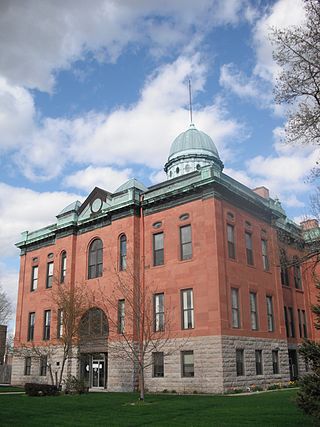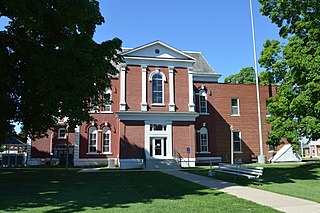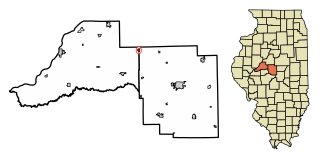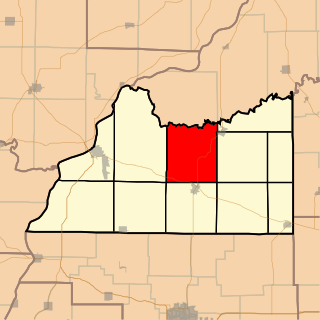
Tazewell County is a county in the U.S. state of Illinois. According to the 2020 census, it had a population of 131,343. Its county seat and largest city is Pekin. It is pronounced with a short "a", to rhyme with "razz" rather than "raze."

Pulaski County is a county located in the U.S. state of Illinois. According to the 2020 census, it had a population of 5,193. Its county seat is Mound City. Its largest city is Mounds. It is located along the Ohio River in the southwestern portion of the state, known locally as "Little Egypt".

Menard County is a county in the U.S. state of Illinois. According to the 2020 United States Census, it had a population of 12,297. Its county seat is Petersburg. Menard County is part of the Springfield, Illinois, IL Metropolitan Statistical Area.

Henderson County is a county located in the U.S. state of Illinois. According to the 2020 United States Census, it has a population of 6,387. Its county seat is Oquawka.

Cass County is a county located in the U.S. state of Illinois. As of the 2020 United States Census, the population was 13,042. Its county seat is Virginia. It is the home of the Jim Edgar Panther Creek State Fish and Wildlife Area.

Wadsworth is a village in Lake County, Illinois, United States. Per the 2020 census, the population was 3,517. It is named after E. S. Wadsworth, who was a major stockholder for the Chicago, Milwaukee, St. Paul and Pacific Railroad, which passes through the village.

San Jose is a village in Logan and Mason counties, Illinois, United States, founded in 1858. The population was 479 at the 2020 census, down from 642 in 2010.

Bath is a village in Mason County, Illinois, United States. The population was 279 at the 2020 census.

Easton is a village in Mason County, Illinois, United States. As of the 2020 census, the village population was 312.

Havana is a city and the county seat of Mason County, Illinois, United States. The population was 2,963 at the 2020 census, a decline from the figure of 3,301 tabulated in 2010.

Kilbourne is a village in Mason County, Illinois, United States. The population was 265 at the 2020 census, down from 302 in 2010.

Manito is a village in Mason County, Illinois, United States. The population was 1,552 at the 2020 census, down from 1,642 in 2010. On March 31, 2023, an EFU tornado struck northwest of the village.

Mason City is a city in Mason County, Illinois, United States. The population was 2,077 at the 2020 census, down from 2,343 in 2010.

Topeka is an incorporated village in Mason County, Illinois, United States. The population was 60 at the 2020 census.

Oakford is a village in Menard County, Illinois, United States. The population was 234 at the 2020 census, down from 286 in 2010. It is part of the Springfield, Illinois Metropolitan Statistical Area.

Petersburg is a city in and the county seat of Menard County, Illinois, United States, on the bluffs and part of the floodplain overlooking the Sangamon River. It is part of the Springfield, Illinois Metropolitan Statistical Area. The population was 2,258 at the 2020 census, nearly unchanged from 2010. Petersburg is located approximately 2 miles (3 km) north of New Salem, the original location where Abraham Lincoln first settled, as he started his career.

Cantrall is a village in Sangamon County, Illinois, United States. The population was 144 at the 2020 census, up from 139 in 2010. It is part of the Springfield, Illinois Metropolitan Statistical Area.

Dawson is a village in Sangamon County, Illinois, United States. The population was 519 at the 2020 census. It is about 10 miles (16 km) east of Springfield and is part of the Springfield Metropolitan Statistical Area.

New Berlin is a village in Sangamon County, Illinois, United States. The population was 1,346 at the 2010 census, and 1,327 at a 2018 estimate. It is part of the Springfield Metropolitan Statistical Area. New Berlin is home to CUSD #16, New Berlin High School.

Sangamon Valley Township is one of eleven townships in Cass County, Illinois, USA. As of the 2020 census, its population was 330 and it contained 160 housing units.























